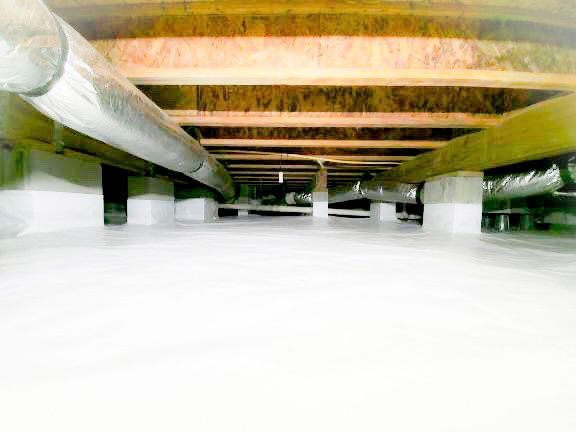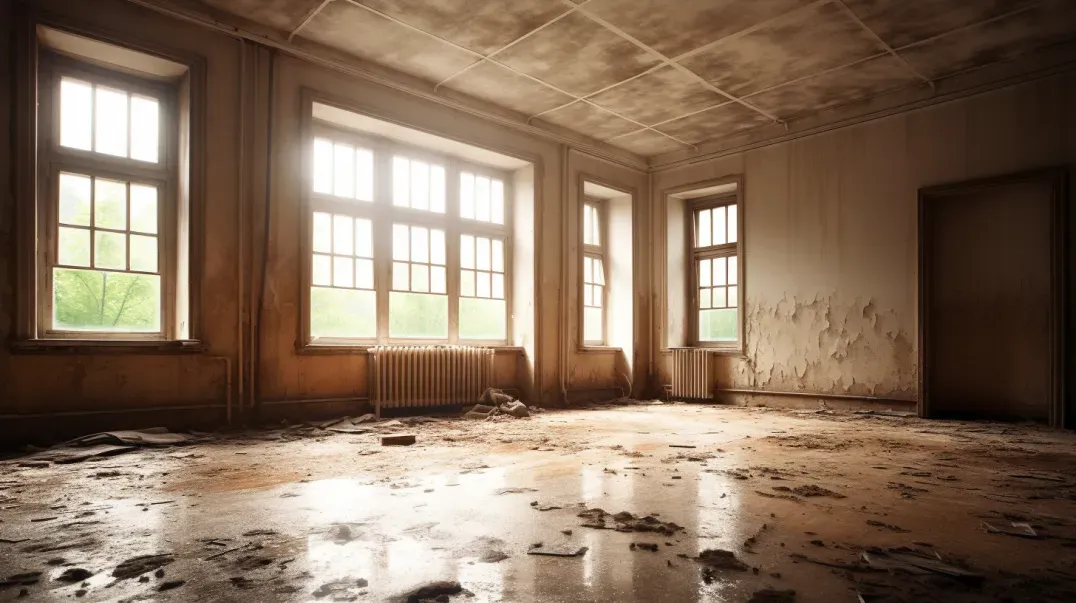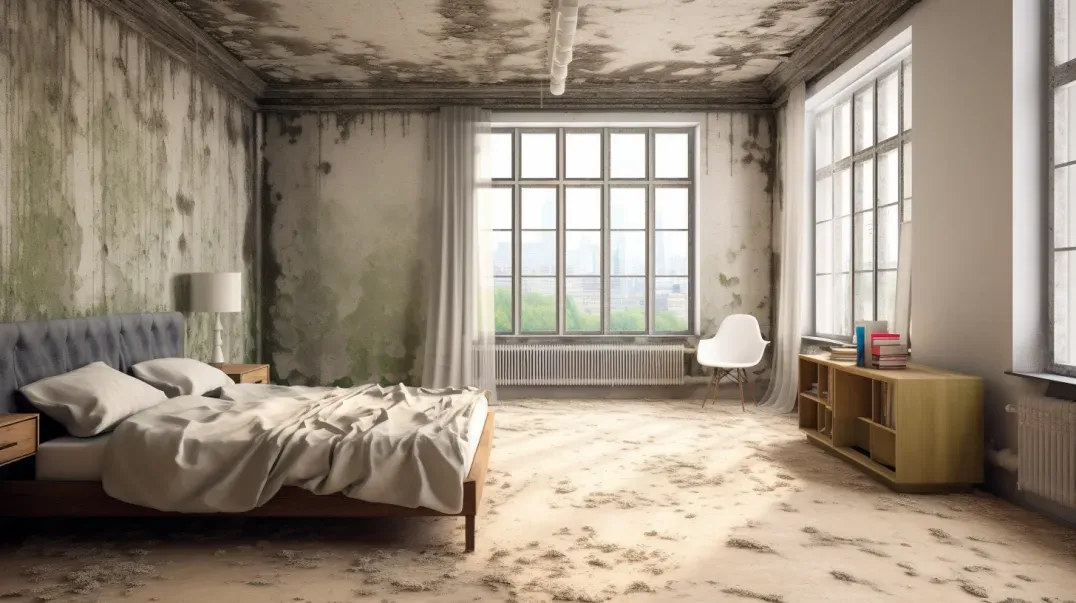Dangers of Leaving Your Crawl Space Unprotected
Crawl spaces are an often overlooked yet essential part of your home. Located between the first floor and the ground, crawl spaces provide support for your house, allowing it to remain stable. However, if left unprotected, crawl spaces can be vulnerable to damage from moisture and pests. Let’s take a look at why it’s important to keep your crawl space safe and dry.
What are the dangers of leaving your crawl space unprotected?
If you own a house, then you likely have a crawl space. This is the area underneath your house that is used for ventilation and access to plumbing and electrical systems. Unfortunately, many homeowners don’t give their crawl spaces much thought. So why is it essential to keep this often-forgotten area safe?
Mold and Mildew Growth
The main danger in an unprotected crawl space is mold and mildew growth. Mold spores are always present in the air, but they thrive in warm, damp environments. A poorly ventilated or uninsulated crawl space can offer just that kind of environment—and once it does, you'll find yourself dealing with all kinds of health issues as well as major structural damage to your property.
Pest Infestations
Another risk associated with leaving your crawl space unprotected is pest infestations of termites, ants, rodents, cockroaches, and other creatures. These pests can enter through cracks in the walls or foundation or even through vents that haven't been properly screened off. Once inside, they will make themselves at home in the dark confines of your crawl space, where you may not even know they're there until it's too late!
Structural Damage
Finally, an unprotected crawlspace can lead to structural damage over time due to water accumulation and improper ventilation. The poorly drained ground around your house can cause rainwater or melted snow to seep into your crawlspace, leading to rot and undermining the integrity of the structure itself. In addition, a lack of proper ventilation can contribute to moisture buildup that accelerates rotting wood and other materials within the space itself.
What can happen if water enters your crawl space?
A crawl space is a difficult area for homeowners to maintain. It can be hard to access, and unless you’re regularly inspecting the crawl space, it’s easy to miss any signs of water damage or other problems. Water can enter your crawl space through leaks, flooding from heavy rains, or even from coming up through the floor. If water does enter your crawl space, it can have disastrous effects on your home and should be attended to immediately.
Structural Damage & Mold
The most significant effect that excess water in your crawl space can have is structural damage and mold growth. Moisture in the air creates an environment where mold spores thrive, which can cause serious health issues such as allergies and respiratory issues if left untreated. Not only that, but moisture also weakens wooden beams and supports over time by causing wood rot. This can result in severe structural damage if it is not dealt with quickly enough. In some cases, this could mean needing to replace entire sections of your home's foundation or supports.
Musty Odors & Pest Infestations
Excess moisture in a crawl space also increases the likelihood of musty odors throughout your home due to poor ventilation and dampness. When these odors become strong enough, they can make living in your home unbearable until the source of the problem is addressed and remediated. On top of that, standing water or excess moisture creates an inviting environment for pests such as termites or carpenter ants. This could lead to costly repairs if pest infestations are not caught early enough by an exterminator or professional inspector.
Foundation Problems & Insulation Issues
In addition to these problems caused by excess water in a crawl space, you may also experience issues with your home's foundation itself due to cracking cement joints or shifting blocks caused by water pressure building up around them over time. If this isn't addressed quickly enough it can compromise the entire integrity of your foundation leading to severe structural damage down the line. Furthermore, too much moisture in a crawl space will reduce the effectiveness of insulation installed there which will lead to higher energy bills due to inadequate temperature control throughout your home year-round.
What are the consequences of having mold in your crawl space?
If you’ve noticed a musty smell or seen signs of mold in your crawl space, you may be wondering what the consequences are. Mold can cause serious health problems and damage to the structure of your home if it’s left unchecked. Let’s take a look at the dangers of mold in your crawl space and how to get rid of it.
Health Risks Associated with Crawl Space Mold
Crawl space mold can cause serious respiratory issues, such as asthma and allergies. People exposed to mold spores can suffer from sneezing, coughing, wheezing, eye irritation, and skin rashes. In some cases, mold exposure can even lead to more serious illnesses like chronic fatigue syndrome or neurological disorders. Furthermore, some types of mold produce toxins that can be harmful to humans if inhaled over an extended time.
Damage to Your Home
Mold isn't just dangerous for people; it can also wreak havoc on your home's structural integrity. It's especially common in crawl spaces since they tend to be damp and dark—prime conditions for mold growth. Once it starts growing in this hidden part of your house, it can spread quickly and cause irreversible damage to the walls and floor joists. As such, you must address any signs of mold as soon as possible before it gets out of hand.
Getting Rid of Crawl Space Mold
The first step is identifying the source of water intrusion that is causing the problem in the first place—this could be anything from a leaky pipe to poor drainage around the foundation of your home. Once you have identified this source and fixed it so that no more water is getting into the crawl space area, you will need to clean up any visible signs of existing mold growth using bleach or another type of strong cleaning agent that kills fungi on contact. Afterward, you should consider installing a dehumidifier to keep moisture levels low enough so that new mold cannot grow back again.
How can you protect your crawl space from mold?
Mold is a pesky problem for any homeowner. Not only can it cause health problems, but it can also damage your home. If you have a crawl space, then you’re even more at risk for mold buildup because these areas are dark and damp. Thankfully, there are ways to protect your crawl space from mold growth. Let’s explore some steps you can take to keep your crawl space clean and dry.
Cleanliness is Key
The first step in protecting your crawl space from mold is to make sure it is as clean and clutter-free as possible. This includes removing any boxes or other storage items that may be harboring moisture and dust particles. You should also make sure all pipes, vents, and ducts are regularly cleaned and vacuumed so that they don’t become breeding grounds for mold spores. Additionally, be sure to inspect the area regularly for any signs of water damage or leaks that could lead to mold growth.
Manage Humidity Levels
Another important step in protecting your crawl space from mold is to manage the humidity levels in the area. Excess moisture leads to condensation which creates a perfect environment for mold growth. To prevent this from happening, install a dehumidifier in the area (or use a fan if the area isn't too big). Make sure to check the device regularly to ensure it is working properly and emptying excess moisture from the air. Additionally, make sure all vents are open so that air can circulate throughout the area; this will help keep humidity levels low and avoid condensation buildup on walls or other surfaces where mold could grow.
Improve Ventilation
Improving ventilation in your crawl space will also help protect against mold growth by allowing fresh air into the area and preventing stagnant air pockets where water droplets can collect. To do this, install fans or vents that will allow outside air into the space while ensuring old air escapes through an exhaust system outside of your home's structure. This will create a constant flow of fresh air which can help minimize potential issues with humidity levels or condensation build-up leading to potential mold growths in difficult-to-reach spots like wall crevices or ceiling corners.
Takeaway
Homeowners should not overlook their crawl spaces when considering ways to protect their homes from potential damage or disasters! An unprotected crawl space leaves you vulnerable to mold growth, pest infestation, and even structural damage over time due to water accumulation and improper ventilation. Fortunately, there are steps you can take now before any real harm is done such as sealing any cracks in walls or foundation; installing a vapor barrier on flooring; ensuring proper drainage; screening off vents; etc., so don't wait - start protecting your home today! It could save thousands down the line!
Contact Lowcountry Crawlspaces Today!
Lowcountry Crawlspaces will do everything we can to ensure your experience with us is excellent.
Request A FREE Estimate
CHECKOUT RECENT POST



Schedule Your FREE Crawl Space Evaluation Today
There Is No Crawl Space Job We Can’t Fix!




